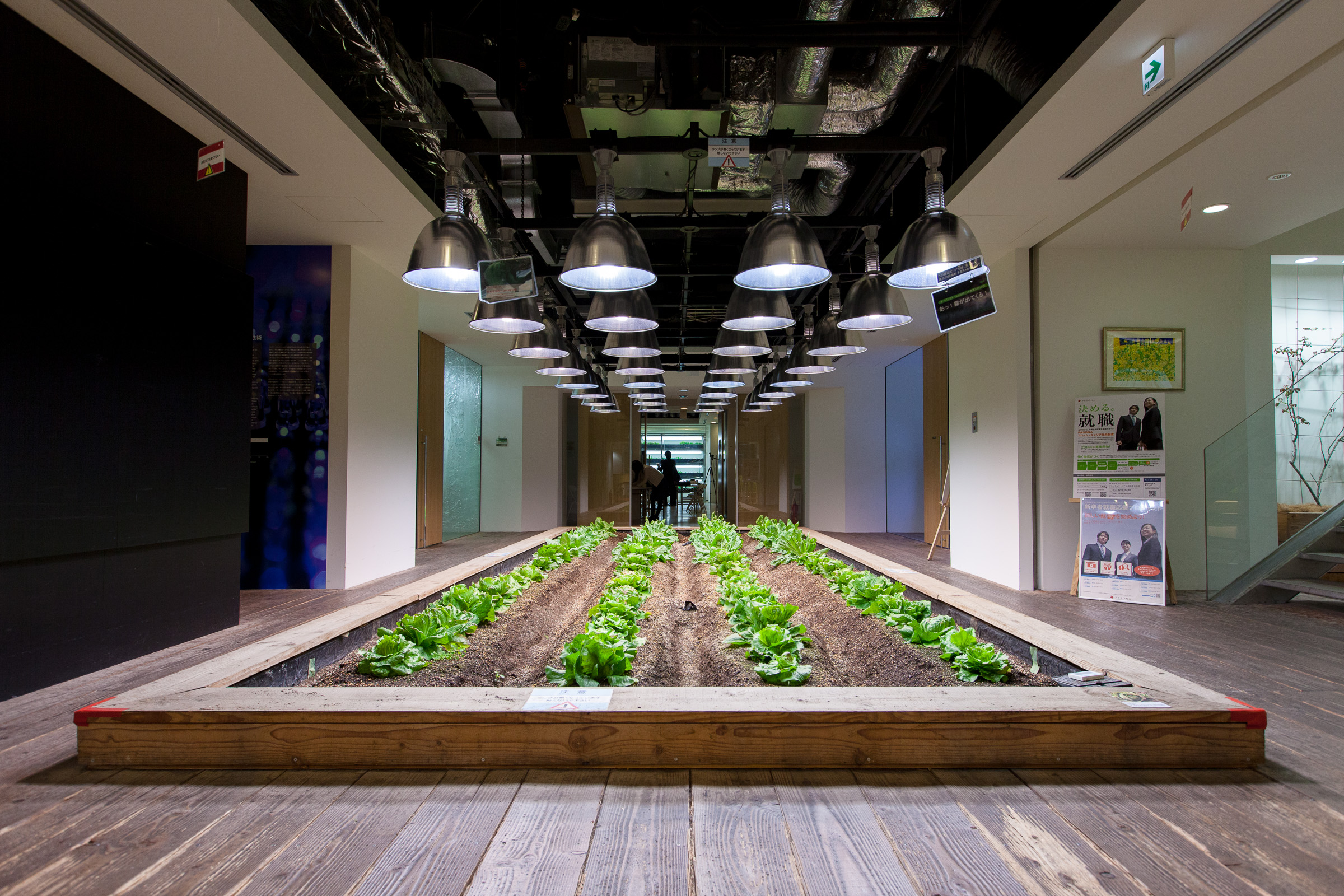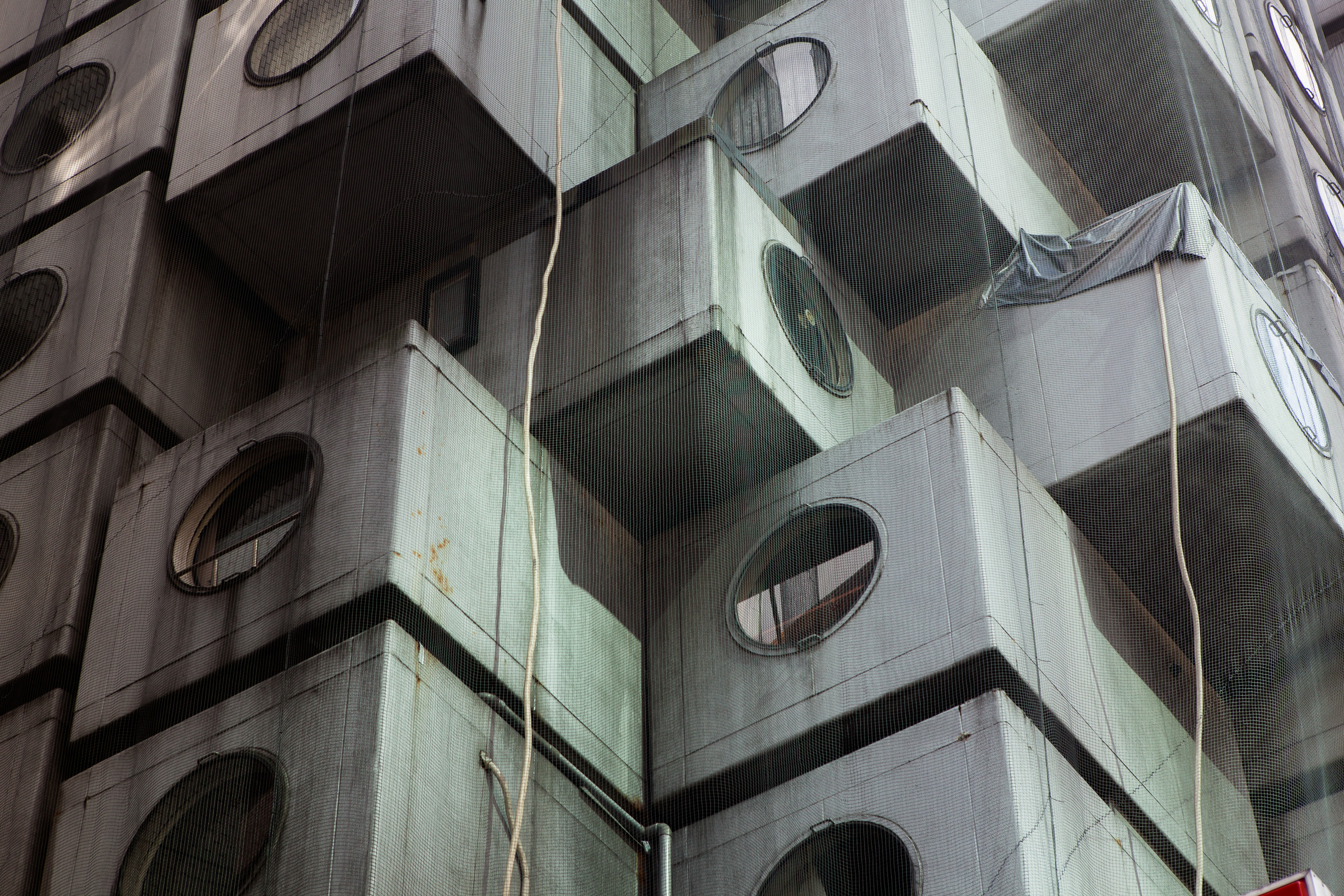Pasona 02, Tokyo

Recruitment firm Pasona has set aside several floors of its Tokyo headquarters to showcase a variety of ‘vertical farming’ technologies. The foyer is dominated by a rice paddy growing under light from a combination of metal halide and high pressure sodium lamps. Elsewhere in the building are hydroponic plots dedicated to growing flowers, herbs, fruits and vegetables. In an office adjoining reception I saw tomatoes growing on vines in trellises overhead and upstairs conference rooms are hemmed-in by shelves of herb gardens and vegetables. All told there are 3995 square metres dedicated to green space that house over 200 species of plants, fruits, vegetables and rice. Specific wavelengths of LED light are used to cultivate seedlings tucked away in drawers in order to conserve space. The fruits and vegetables produced are harvested by employees and sold in the building’s cafeteria. A digital climate control system monitors humidity, temperature and air flow to optimise conditions for crop growth but also keep the building comfortable for staff during office hours.
Even the facade of the building is used as a growing space with seasonal flowers and orange trees grown in balconies on all nine floors.
The energy requirements in this case almost outweigh the benefits but Pasona’s indoor farms are designed as a proof-of-concept to encourage further innovation and it seems to be working. One of the most vocal advocates for vertical farming, Dr. Dickson Despommier, said the improving efficiency of the lighting systems was a good indicator that the technology would only become more viable. From BeforeItsNews;
Already Philips has created an LED light that is 68% efficient, compared to its previous 28% efficient model. When it comes to convincing investors and banks, this has made a huge difference, Despommier said, adding that “vertical farming is fast becoming a profitable option, rather than a gimmicky idea destined to stay in the domain of fancy architectural drawings. . .Despommier says it’s hard to compare the prices of indoor and outdoor farming directly, because traditional agriculture is so heavily subsidised. Indoor farming, despite its use of electricity to power LED lighting, uses less fossil fuels overall: yields are far higher (90 per cent rather than about 50 per cent for traditional farming), you often don’t have to transport it so far, and operations like weeding are cut out of the chain.
If necessity is the mother of all invention then Japan will remain at the forefront of this sort of research. Japan produces less than one-third of their grain domestically and has one of the biggest importers of food in the developed world. Compounding this is a generational trend away from farming towards urban and industrial work. By bringing agriculture into the city Pasona is hoping to inspire a new generation of Japanese farmers.
Notes:
Blouin News: Meet Vertical Farming, No Sunlight Necessary
De Zeen: Pasona Urban Farm
City Metric: This is why we should be farming skyscrapers











Leave a Reply